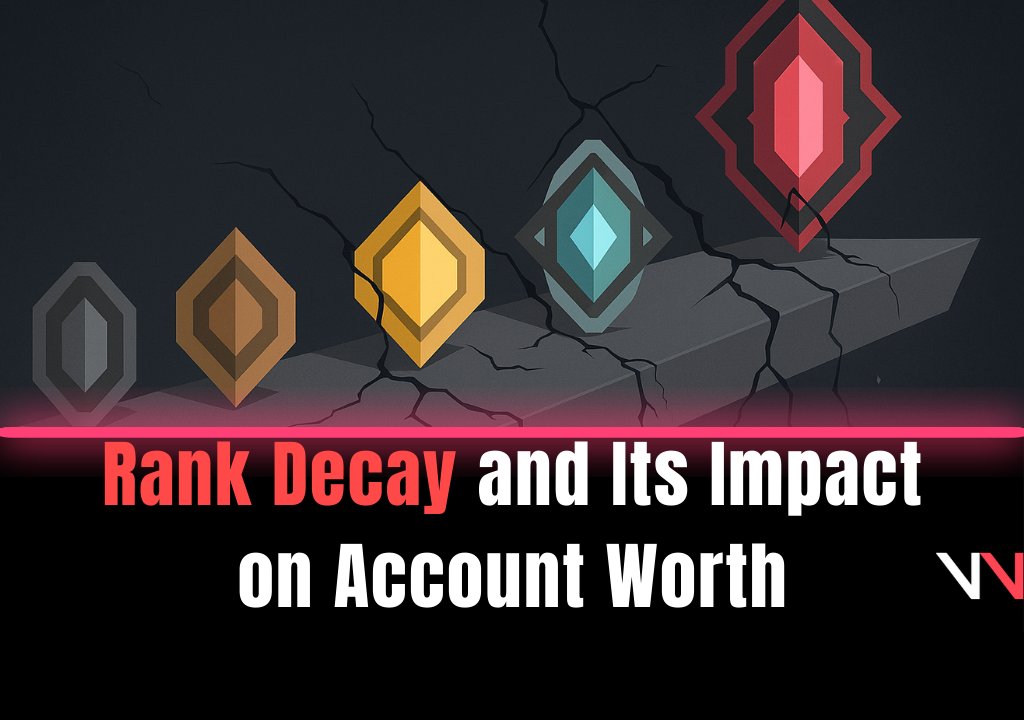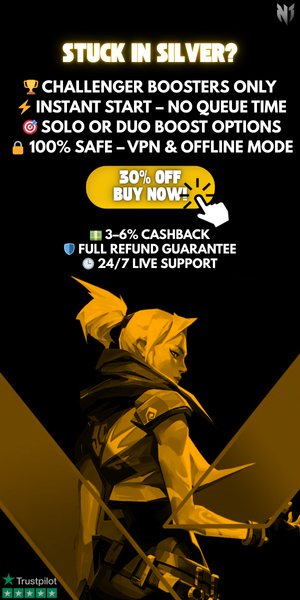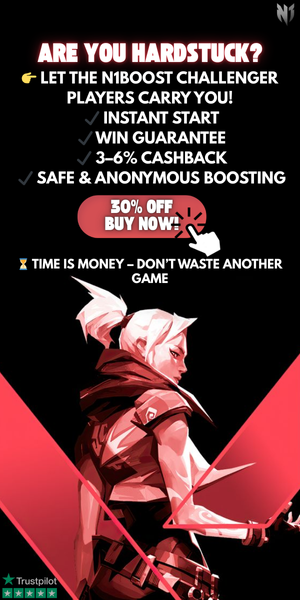Rank Decay and Its Impact on Account Worth
Introduction
In Valorant, a player's competitive rank is one of the biggest factors affecting an account's resale value. However, rank decay—the gradual loss of rank over time due to inactivity—can impact how much an account is worth on the market. In this blog, we'll discuss how rank decay works, why it matters for account valuation, and what collectors and investors should consider when evaluating their Valorant accounts.
1. What is Rank Decay
Rank decay occurs when a Valorant account is inactive for a period of time:
- Accounts that do not play competitive matches may see their ranks drop slightly or gradually.
- The rate of decay depends on the account's current rank and the time of inactivity.
- High-tier ranks like Immortal or Radiant are especially affected, as maintaining these ranks requires consistent play.
Why It Matters: If an account loses rank due to inactivity, its resale value may decrease because buyers prefer accounts with a current high rank.
2. How Rank Decay Affects Market Value
Rank decay can directly influence how much collectors and players are willing to pay:
- Accounts with a dropped rank may sell for less than accounts that maintain their rank.
- Buyers often consider how quickly an account may regain its previous rank, which adds uncertainty.
- High-demand accounts with consistent rank stability generally maintain a premium price.
Effect on Account Worth: Even if the account has rare skins or cosmetics, a decayed rank can reduce the overall value.
3. Factors That Contribute to Rank Decay
Several factors determine how quickly an account's rank might drop:
- Inactivity Period: Longer periods without competitive matches increase decay.
- Previous Seasonal Performance: Accounts that have consistently ranked high may experience smaller drops.
- Current Rank Level: Top-tier ranks like Radiant or Immortal are more sensitive to inactivity than mid-tier ranks.
Tip: Keeping consistent play helps retain the account’s market value over time.
4. How Investors Can Protect Account Value
Investors and collectors can take steps to minimize the impact of rank decay:
- Play periodic competitive matches to maintain rank.
- Focus on acquiring high-rank accounts with consistent performance history.
- Track seasonal performance rewards to demonstrate account activity.
Result: Accounts that are active and maintain rank tend to retain their market value, making them safer investments.
5. Combining Rank with Other Account Features
Even with rank decay, accounts can remain valuable if paired with other premium features:
- Rare skins and bundles that are limited edition or event-exclusive.
- Agent unlocks and cosmetic rewards linked to high-rank performance.
- Seasonal achievements that reflect long-term activity.
Effect: These features can offset the negative impact of rank decay and keep the account appealing to buyers.
Conclusion
Rank decay is a critical factor that affects the resale value of Valorant accounts. Accounts that lose rank due to inactivity may see a drop in market value, even if they contain rare skins or cosmetics. To maximize account worth, players and collectors should maintain activity, combine high ranks with valuable cosmetics, and monitor seasonal performance.
Check the current value of your Valorant account and its market trends on ValorantValue.com
. The platform provides up-to-date information about ranks, skins, bundles, and other account features, helping you make smart investment choices.
Tags
Jettor
Author



